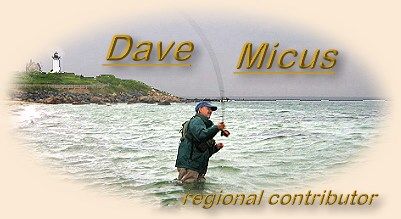|
Hope is the thing with feathers, wrote
Emily Dickinson, which means she was a fly tier. What
else could she have been referring to? Fly tying could
be defined as the union of hope and feathers. It's an
impressionistic art; while there are, as tier Dave
Whitlock says, flies "with elbows, eyeballs, and arseholes,"
tied to look exactly like what they imitate, these flies
hook fishermen, not fish. Fish prefer Monet to Wyeth.
Bluefish prefer Edvard Munch.
Emily would be surprised at the price of fly tying
feathers today. A premium grade dry fly saddle hackle
from a genetically engineered chicken can cost $70,
and you don't even get to eat the bird. The feathers
of more exotic species, like jungle cock, can sell for
well over $100. At least the hope is free.
These prices send we more frugal tiers who wish to
stay married on an Argonaut-like quest for better
and cheaper materials. Some alternative material
sites are obvious, like craft stores where you can
pick up tinsel and foam, or drug stores where
you can get nail polish and cuticle scissors.
You'll have to grin and bear the look of the women
shoppers, the look that demands "What are you doing
in the cosmetics section, and why are you hoarding
nail polish?" But you can also go to the hardware
store and stock up on shrink tube, epoxy, copper
wire, even bottle corks for poppers without a second
glance from the male clientele--assuming you left
the nail polish in the car.
Good tiers need a vivid imagination; good material
hunters do, too. Native American Pow Wows are a good
source for feathers and fur, and even head shops have
a decent selection of beads for tying bead heads.
Hunting friends can provide moose or deer hair, as
well as pheasant and grouse feathers. I personally
draw the line at picking up road kill but would lose
that compunction if I were fortunate enough to hit
something unusual like a peacock (state laws vary on
this), I read that innovative fly tier Jack Gartside
buys old fox and mink stoles from the Salvation Army
Thrift Store and uses the fur to tie his famous streamer
patterns.
"We are constantly on the lookout, and view every thing
with added interest. Possibly we may turn it into a bug
of some kind," wrote the father of American fly fishing,
Theodore Gordon, 96 years ago. Gordon would appreciate
"Soul Braids," six-foot long synthetic ponytails recently
on sale at Building 19, a local salvage store. It's hard
to find suitable tying material in such lengths, and the
braids, unimaginable as a hairpiece, proved to be perfect
for tying long streamer and eel patterns. The best part
was the price--only $3 per wig. You won't find that at
Orvis.
The extreme to which fly tiers will go was brought
home to me on a fishing trip to the Connecticut River
in Pittsburg, New Hampshire. There I met a man who
tied flies using the hair from his dogs behind.
Seriously. And while not exactly the Golden Fleece,
he swore that with this material he tied flies that
caught trout (which isn't unlikely; there is an old
dry fly pattern, the name escapes me, that calls for
the use of 'urine stained fox fur'). I trust for
the dogs sake that he doesn't tie many flies in
the winter.
Hope is the thing with hair from a dog's behind.
Only a fly tier could find the poetry in that.
~ Dave
About Dave:
 Dave Micus lives in Ipswich, Massachusetts. He is an
avid striped bass fly fisherman, writer and instructor.
He writes a fly fishing column for the Port City Planet
newspaper of Newburyport, MA (home of Plum Island and Joppa Flats)
and teaches a fly fishing course at Boston University.
Dave Micus lives in Ipswich, Massachusetts. He is an
avid striped bass fly fisherman, writer and instructor.
He writes a fly fishing column for the Port City Planet
newspaper of Newburyport, MA (home of Plum Island and Joppa Flats)
and teaches a fly fishing course at Boston University.
|

 Dave Micus lives in Ipswich, Massachusetts. He is an
avid striped bass fly fisherman, writer and instructor.
He writes a fly fishing column for the Port City Planet
newspaper of Newburyport, MA (home of Plum Island and Joppa Flats)
and teaches a fly fishing course at Boston University.
Dave Micus lives in Ipswich, Massachusetts. He is an
avid striped bass fly fisherman, writer and instructor.
He writes a fly fishing column for the Port City Planet
newspaper of Newburyport, MA (home of Plum Island and Joppa Flats)
and teaches a fly fishing course at Boston University.